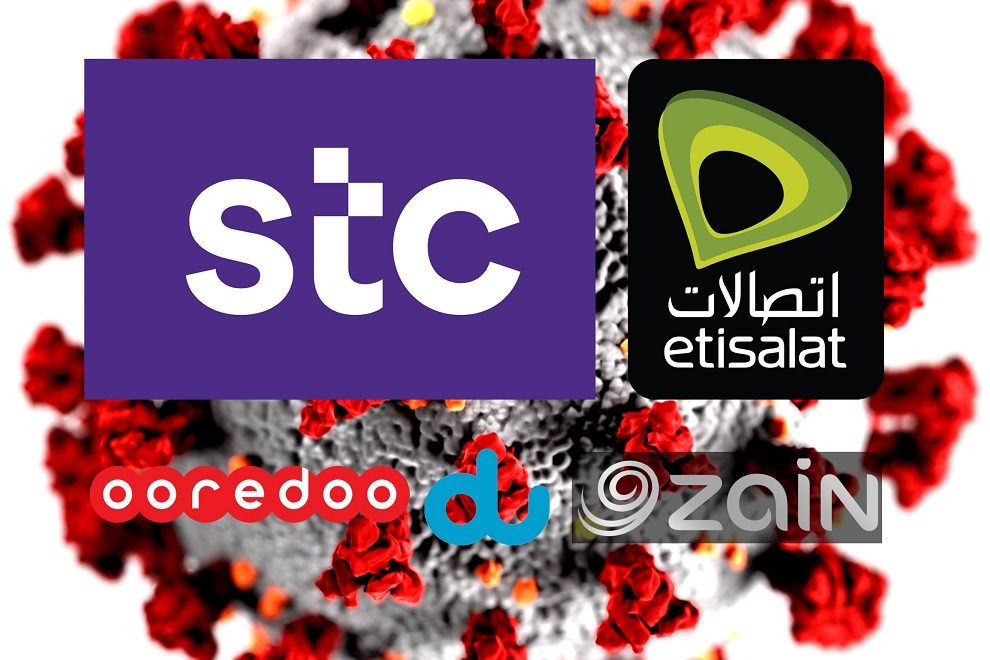 COVID-19 has hit the world fast and furiously. Almost every country has reported novel COVID-19 infection cases. In efforts to contain its spread, governments around the world have announced near or total shutdown, forcing citizens to stay at home. However, these measures have triggered a severe slowdown in economic activities across most of the industry verticals. In line with the global GDP projected to slide into recession, the GDP of the Middle East region too is expected to witness overall negative growth rate in 2020. In addition to drop in consumption and delay in investments, the Middle East countries have also witnessed sinking oil prices shocks, amid massive contraction in oil-demand. Moreover, OPEC countries and Russia, unable to reach any agreement regarding output cuts, further led to the fall in international crude oil prices. While every vertical market is facing its own unique challenges; travel and tourism, mobility, construction and real estate are the most impacted industries in the COVID-19 crisis.
COVID-19 has hit the world fast and furiously. Almost every country has reported novel COVID-19 infection cases. In efforts to contain its spread, governments around the world have announced near or total shutdown, forcing citizens to stay at home. However, these measures have triggered a severe slowdown in economic activities across most of the industry verticals. In line with the global GDP projected to slide into recession, the GDP of the Middle East region too is expected to witness overall negative growth rate in 2020. In addition to drop in consumption and delay in investments, the Middle East countries have also witnessed sinking oil prices shocks, amid massive contraction in oil-demand. Moreover, OPEC countries and Russia, unable to reach any agreement regarding output cuts, further led to the fall in international crude oil prices. While every vertical market is facing its own unique challenges; travel and tourism, mobility, construction and real estate are the most impacted industries in the COVID-19 crisis.
Impact on Middle East ICT sector:
Budget cuts among major spending industries like oil and gas, aviation, and public sector, shrinking project pipeline, renegotiation of contracts, and longer sales cycle are key challenges faced by the Middle East ICT industry. Despite these challenges, the need for business continuity solutions like remote access of critical IT infrastructure and enterprise data, along with surge in demand for network implementation and management services have improved significantly. On the other hand, the telecom industry is relatively shielded with respect to other industries. With lockdown measures in place, majorities of the people are working from home, students are adapting to e-learning or home-schooling, and governments are implementing national crisis mitigation initiatives. The requirement that is universal for all of them is reliable network connectivity along with availability of sufficient bandwidth. Thus, telecommunication services have become significantly crucial than ever before. In response to these changing market dynamics, telcos in Middle East have undertaken several initiatives; a few of them are listed below.
Key measures by telecom operators in Middle East:
- Facilitating remote working: Video conferencing solutions have been the lifeblood of companies and educational institutions in the current testing times. With closed office and imposition of travel restrictions, video meetings have helped companies from falling apart and minimize the business impact. To cope with this increasing demand for video conferencing tools, regulators in countries like UAE and Oman have lifted ban on many popular OTT communication applications. On the other hand, telcos have started providing its customers with zero-rated access to several collaboration tools. For instance, Etisalat UAE granted businesses with 3 month free access to CloudTalk Meeting. Omantel is offering free access to WebEx for 3 months, Microsoft Teams for 6 months and IGTIMAATI for 4 months. Operators like Ooredoo Oman have also introduced a B2B app enabling businesses to maintain accounts while home working.
- Enabling online education: Telcos have undertaken several initiatives to facilitate students to study remotely and universities/schools to conduct virtual classes. Etisalat UAE for example, has provided students with free access to around 800 educational websites. While, operators like Du UAE and Ooredoo Qatar upgraded the speed of their fixed internet connectivity for local educational entities without any additional cost. Both Etisalat and Du in UAE, at the behest of the regulator, have started offering households with no fixed Internet connectivity, with free mobile data allowances for facilitating e-learning.
- Additional data and voice benefits: Telcos are offering bonus data and voice quotas, helping citizens to get through the self-quarantine period. Ooredoo, Zain, and STC in Kuwait offered free 5GB daily allowance and free domestic calls to all of their subscribers for a month. Vodafone Qatar offered double speeds and double data at no additional cost. STC KSA has announced to double the data capacity for its Quicknet prepaid packages without any additional hike in price.
- Discounts on tariffs and bill payment: Amid pressure on consumer spending, telcos in the region have launched several bill waving and discount offers, facilitating customers to stay connected. For instance, Zain KSA reduced the subscription price for 5G Shabab Postpaid packages by 20% and offered a month of free access to Zain fiber new subscribers. STC KSA announced the temporary suspension of fees for SMEs that wish to suspend their services by end of April. In March, Zain KSA has extended the payment period for an additional sixteen days.
- Promoting digital channels: Amid closure of retail stores, operators are pushing digital channels like mobile applications and eshop portals, enabling customers to place new order for products and services, as well as make bill payments. Few telcos are offering additional benefits on recharges and discounts on mobile money transactions. For instance, STC Bahrain is promoting the use of its digital channels like mobile payment app – STC Pay, online shop, and account management app. Ooredoo Qatar is waiving mobile money transaction fees for remittances. In addition, Ooredoo Qatar has also increased data allowances by twofold for new 5G customers, when subscribed through its eShop.
Impact on services:
Mobile services: Mobile voice and data traffic have continued its growth on the back of high penetration rates in the GCC region. However, this COVID-led rise in usage is likely to have moderate impact on the ARPU levels and revenue growth. This is mainly due to the ongoing bill waving and discount offers, as well as free upgrades of plans offered by telcos. Compared to consumer services, business services revenue are anticipated to be more affected due to spending cuts by major businesses and SMBs, amid decline in activity and cash inflow problem. Moreover, up-selling of products and services will decelerate due to the COVID-led pressure on consumer spending power. However, revenue from traditional mobile and roaming services are likely to rebound quickly post the pandemic along with additional increase in revenue from value added services like mobile money.
Fixed services: Majority of the population coping with travel restrictions is relying more heavily on their home broadband connections, leading to significant growth in traffic volumes in the fixed network. This rise in fixed voice and broadband traffic has been way higher as compared to mobile voice and data traffic growth. Moreover, the increasing usage of video conferencing and collaboration tools by healthcare sector, academics, and work from home populace among others, have further led to the spike in fixed broadband traffic levels. The changing consumer appetite for data intensive services and increasing preference of digital offerings are likely to continue post the crisis. This will further drive data traffic growth, both in mobile and fixed services in the long run.
Pay-TV and OTT video services: In-house entertainment is demonstrating its value during the COVID-19 pandemic. While, majority of the customers are expected to retain their existing pay-TV services, few customers may churn out in favor of OTT video services. This in turn will negatively impact revenue from traditional pay-TV services like cable, satellite and IPTV. Irrespective of the platform, demand for video-on (VoD) services is witnessing a robust growth. Operators can capitalize on this demand and sustain growth by focusing on offering VoD services through their own platform or by partnering with OTT vendors.
ICT and IoT connectivity services: Key ICT services offered by telcos like collocation and hosting, security, and unified communications have been witnessing a rapid rise during the pandemic as a result of business continuity measures implemented by enterprises. Going forward, expected rise in investments for driving business continuity and mitigating future risks will pave new growth prospects for telcos, especially in the area of datacenter services. On the other hand, adoption of IoT services has been impacted negatively mainly due to the decline in automotive sale, which is one of the largest IoT application segment. However, the existing IoT installed base will continue to generate revenue for telcos.
Impact on 5G:
Several leading telcos across the Middle East region launched their commercial 5G network during 2019. However, the network coverage and availability of compatible devices was limited. 2020 was expected to be the year for 5G in Middle East region as telcos had ramped-up their 5G and fiber network rollouts, while, major smartphone manufactures were planning to launch several new 5G ready devices. However, impeded supply chain as well as shortage of staffs is likely to affect the ongoing 5G and fiber rollout projects in the region. The difficulty in acquisition of manufacturing materials and delivery of finished goods are imposing as major challenges for the equipment supplier ecosystem. In addition, cash crunch among ecosystem players, slowdown in purchase of new devices, and delay in availability of 5G enabled smartphones will further effect 5G adoption as well as monetization. Nevertheless, the current crisis is providing unique opportunity for the telcos to explore 5G pilots in the healthcare sector like remote diagnosis and treatment, etc.
Conclusion & future outlook:
Despite the COVID-19 crisis continues to impose several challenges for telecom operators, it is also creating new opportunities in areas like collocation and hosting, VPN, bandwidth allocation for critical entities like healthcare, education institutions and others. The ongoing adaptation or changes in communication practices by consumers are expected to shape the dynamics of the Middle East telecom market in the future. A larger number of customers preferring digital services like online ordering, mobile payments, robust collaboration tools, etc., will be the new normal for telecom operators post the crisis. In order to tap these future demands, telcos should continue to invest in their network infrastructure. While ease of financing by central banks, will encourage operators to carry out their planned investments amid the uncertain environment. Moreover, telcos climbing up the value chain beyond connectivity services, offering industry specific solutions, and leveraging emerging business models in vertical markets like IoT and AI to empower a smarter and productive society is paving new growth opportunities. Over the near term, companies should continue to leverage new opportunities arising from changing customer demands and also explore supply chain diversification. While, expanding product and service portfolio especially facilitating customers with greater flexibility will be critical over the long term.
In the pre COVID era, telcos have faced challenges for improving their profit margins, largely due to less favorable regulations and lack of strategic governmental attention. While the ongoing crisis, have proved telcos’ pivotal position for sustaining social life under strict social distancing norms and travel restrictions. Moreover, millions of workers were able to contribute towards the GDP from their home thanks to the telcos. Moving forward, telcos have a unique opportunity to further accelerate GDP growth by enabling a new digital society and launching new solutions leveraging technology. At the same time, supportive or favorable telecom policies by governments and regulatory bodies will also play a significant role in fostering telecom industry growth and further recovering the economy. Allocating additional funds to national milestones like 5G roll-out and broadband strategies, providing temporary spectrum for coping with surge in traffic, reducing tax and easing credit facility, facilitating infrastructure openness, and supporting innovation in the 5G ecosystem will be imperative for telcos to compete against the ongoing crisis.












